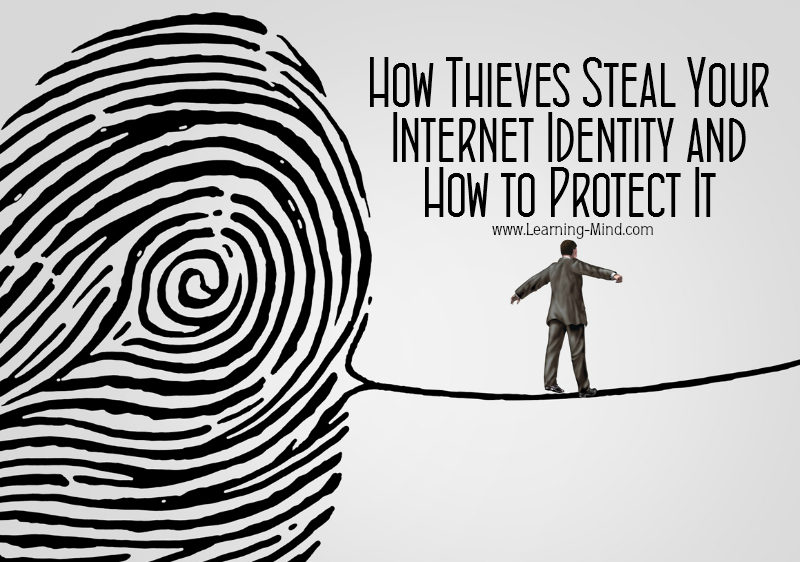
The Internet equals convenience. That said, it has many dangers, so it’s necessary to know how to protect your identity in the online world.
Identity thieves are becoming more sophisticated every day. They have many ways to use the information that you have stored online to access your bank accounts. So, how to protect your identity and what should you do to stay safe online?
Identity theft happens when a thief uses your personal information to access your financial accounts.
Online identity theft happens when a thief steals your digital information. He or she does so by installing software on your PC secretly. This person may also send you an email that persuades you to click on links.
Hackers are resourceful and have many ways to steal your personal information. Knowing their methods will help you outsmart them.
First of all, fraudsters have the resources to access your credit card information. They can do this quickly because you use your credit card when making purchases at supermarkets and restaurants.
Your credit card passes through many hands every day. Try to use terminals that let you tap or swipe your card yourself. Keep a close eye on it at all times.
A thief can access your personal information when you buy anything online. Make sure that you do so from secure websites.
You could describe phishing as an email scam. The fraudster portrays himself or herself as someone who represents an organization, e.g., the police. The person then tricks victims into providing personal data that they can use to steal money or make purchases.
A hacker is a tech-savvy thief. He or she breaks into the computer systems of banks or department stores. Most organizations would inform you if this happens. When you receive such information, close your account immediately.
Be discreet when typing your ATM pin or credit card number in public. Someone could be looking over your shoulder to steal your details. Cover your screen with your hand when typing passwords or numbers.
A hacker may call a company and ask for access to your credit report. What excuse could this person give for needing it? He or she could pretend to be your employer. Call your credit card company if you notice unauthorized transactions.
This method is one of the sneakiest hackers use to steal your identity, online or off. As the word suggests, thieves use pretenses to take personal information. They call banks and companies to get personal data. Let these organizations know if you notice suspicious account activity.
Thieves also search trash cans and dumpsters for passwords and bank statements. Tear these documents before throwing them away.
Some identity thieves steal your new credit cards, passwords, and other personal information the old-fashioned way – from your mailbox. Contact your post office if you think someone has tampered with yours.
Thieves look for ways and means to improve their thieving skills. Many take to Facebook to steal victims’ pictures, and consequently, their information. Using a reverse image search tool will prevent a thief from getting your details. It prevents people from using keywords to conduct image searches.
We don’t have to be the victims of fraudsters. After all, protecting your online identity is not that difficult. Here’s how to protect your internet information.
The first layer of website security that hackers try to break down is passwords. Doing so will allow them to access your personal information. Therefore, you’ll have to secure passwords well.
Random passwords are the best ones. Never use personal information, e.g., a pet’s name, as a password. These are too accessible.
Also, don’t reuse passwords between sites. Create a different one for each account. Like most internet users, you will have many to manage. We recommend that you use a password manager such as LastPass.
Also, even well-thought-out passwords are vulnerable. Activate 2FA when possible. Though accessing your internet accounts will be troublesome, they will have an added layer of protection.
Furthermore, use hardware security keys that support 2FA. Popular services such as Facebook, Google, and Dropbox support multifactor authentication. To enable 2FA, use an application like Google Authenticator. Never use Short-messaging codes to authenticate passwords. They are the easiest for hackers to decipher.
Moreover, most software systems have built-in security functions. Download updated programs because they have the latest security preferences. Update anti-virus software, mobile apps, and web browsers.
Fraudsters can make their emails seem as though they are from authentic organizations. To verify emails, ask yourself if people have reasons to send them. Never open emails from unknown contacts. Emails from organizations are typically well-written and have few spelling errors. The attached links would be relevant.
Another way to protect your online identity is to check website plugins. Look out for apps that you haven’t authorized. If you do, disable their permissions to access your computer. Clicking on them will give a hacker access to your laptop and financial accounts.
Also, check website security. A secure website URL begins with Https. It would have the word ‘secure’ next to it.
Browser extensions help you access the internet without having to use too many passwords. Using them will keep your internet accounts safe.
Having access to personal information makes a hacker’s job easier. A stranger can get your details from your Facebook and other profile pages. Toggle your privacy settings to allow only family and friends to access them.
Public WiFi isn’t secure, as the word ‘public’ suggests. Hackers have an advantage when you use it. Use VPNs (Virtual Private Networks) that will make it difficult for hackers to obtain your identity.
Finally, news media outlets usually report on company data breaches. Make it a point to stay on top of how hackers do their work.
In all, there are many ways to protect your identity online. Use these measures to protect yourself because you are vulnerable.